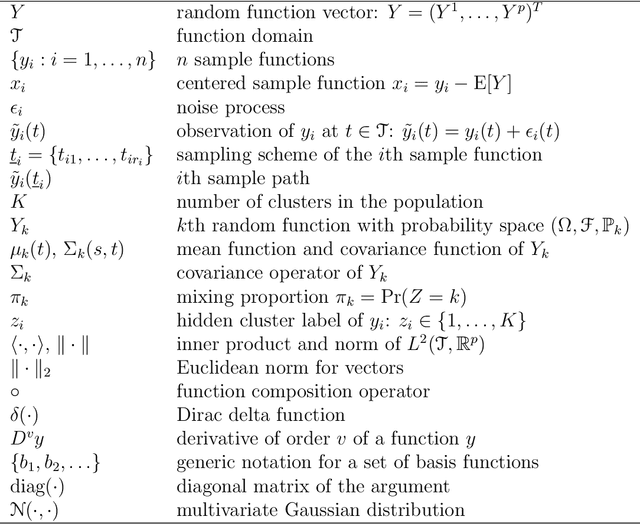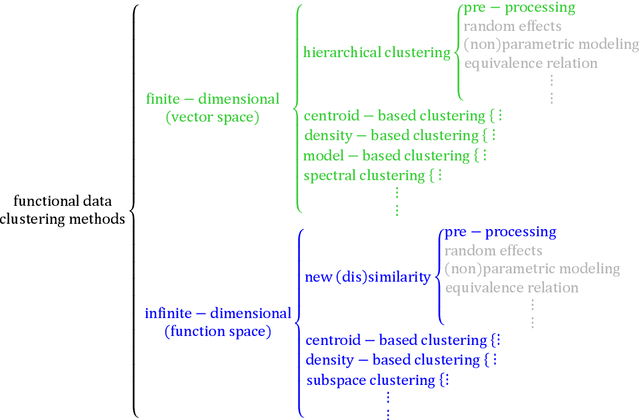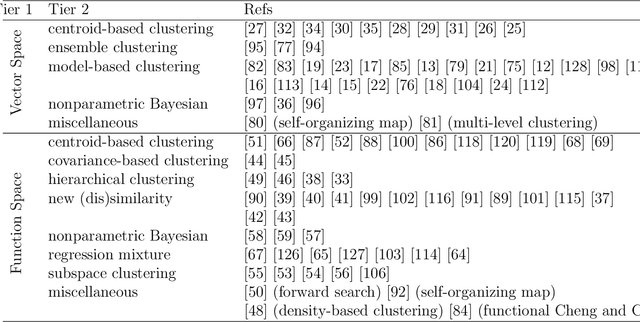Review of Clustering Methods for Functional Data
Paper and Code
Oct 03, 2022



Functional data clustering is to identify heterogeneous morphological patterns in the continuous functions underlying the discrete measurements/observations. Application of functional data clustering has appeared in many publications across various fields of sciences, including but not limited to biology, (bio)chemistry, engineering, environmental science, medical science, psychology, social science, etc. The phenomenal growth of the application of functional data clustering indicates the urgent need for a systematic approach to develop efficient clustering methods and scalable algorithmic implementations. On the other hand, there is abundant literature on the cluster analysis of time series, trajectory data, spatio-temporal data, etc., which are all related to functional data. Therefore, an overarching structure of existing functional data clustering methods will enable the cross-pollination of ideas across various research fields. We here conduct a comprehensive review of original clustering methods for functional data. We propose a systematic taxonomy that explores the connections and differences among the existing functional data clustering methods and relates them to the conventional multivariate clustering methods. The structure of the taxonomy is built on three main attributes of a functional data clustering method and therefore is more reliable than existing categorizations. The review aims to bridge the gap between the functional data analysis community and the clustering community and to generate new principles for functional data clustering.
 Add to Chrome
Add to Chrome Add to Firefox
Add to Firefox Add to Edge
Add to Edge